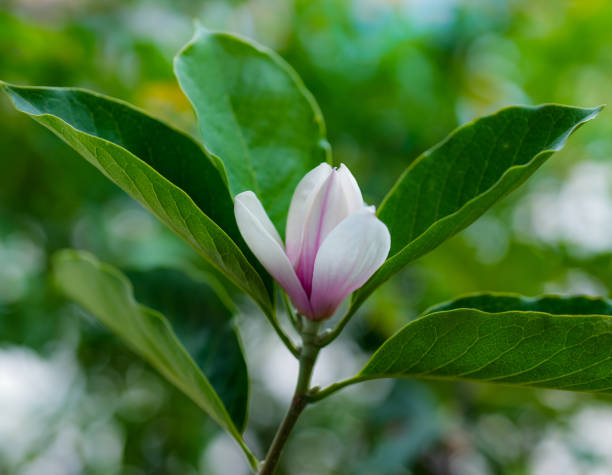Do Magnolia Trees Have Invasive Roots?
Trees enhance our homes’ beauty and curb appeal, but did you know that some varieties can cause severe plumbing and foundation problems for your home? Many of the known trees that you choose to plant around your home. They have a tendency to grow roots that burrow into the cracks of your home’s structure, and/or plumbing system may surprise you. These roots may cause significant damage to your home’s existing foundation and structure, as well as any pipes leading into or out of the house. You may want to plant a Magnolia tree because of its beautiful flowers, but you are afraid it can damage. So the question is, are Magnolia trees have invasive roots?
The answer is partly yes and no. Magnolia tree roots are not invasive, but when they grow too close to a house, they can cause damage. The roots of magnolia trees are no exception to this rule. On the other hand, Magnolia tree roots are much more extensive than those of most other trees.
Magnolia trees have roots that spread outward from the trunk for stability purposes instead of going straight down. Their rope-like roots aren’t known to be particularly invasive in normal conditions, though. However, under certain circumstances, they can cause problems with the foundation. Because tree roots prefer the soil, they can pose a problem for people who have planted too close to their homes.
There is little risk of foundation or sewer damage from the magnolia tree’s roots compared with roots from other plants. The roots aren’t known to be a problem, but you should think about where you’re going to plant the tree before you do so. Here are some interesting facts about the root system of the Magnolia tree. Keep reading!

Table of Contents
Big Magnolia Trees’ Extensive Roots
Depending on their species, magnolia trees can reach heights of up to 80 feet and have root systems that can extend up to four times the width of their branch spread. The fact that magnolia trees grow horizontally rather than vertically means less likely to cause plumbing or sewer problems. If the tree doesn’t get enough water, the roots of the magnolia tree can become problematic. Root systems are drawn to the soil’s moisture. Long-term periods of drought can cause roots to shrink. Due to this phenomenon, soil can be pulled away from a foundation in rare cases. A large magnolia tree root mass can draw water away from home foundations.
Can A Magnolia Tree Damage House Foundations?
There are more and more roots as the tree grows. They also get longer and wider, which may cause cracks in the foundation. Particularly if the roots do not receive adequate irrigation. Roots may shrink if the ground is extremely dry for an extended period. In some cases, this can cause the soil around a home’s foundation to pull away from the structure, causing the structure to crack. If the foundation is shallow, some damage may occur.

How Close Can You Plant a Magnolia Tree to Your House?
First, determine what type of Magnolia tree you are going to plant. Find out its mature height and spread. For example, a prominent Southern Magnolia can reach 60-80 feet tall with a 30-50 feet crown spread. Most Magnolias extend about four times the width of the canopy from the trunk. So plant the tree 30-60 feet away from the house foundation.
Planting the tree at a significant distance from the house will help reduce the risk of foundation damage as the tree grows in size. It also aids in preventing the canopy of the tree from blocking out the sunlight from entering the home.
Do Magnolia Cause Problems to Hardscapes and Pipes?
The proximity of tree roots to pavements or hardscapes can eventually cause the hard surface to shift and lift. Choosing smaller plants near hard surfaces, or planting trees at least 4 feet away from them, will help prevent this situation.
Although this is a rare occurrence, damaged underground pipes have been clogged by tree roots. Pipes are more likely to fail due to aging or soil movement, which could allow tree roots to penetrate pipes and cause them to leak. However, modern pipe and joint materials are unlikely to be damaged by soil settling, reducing the likelihood of tree roots likelihood to grow into pipes.
Why Do Some Trees Cause Plumbing Issues?
Trees don’t look for ways to cause trouble. They just need water, nutrients, or more space to grow. Some types of plants need a lot of water to live. In this case, if they don’t get enough water, they’ll send their roots out to look for it. The nearest source will probably be your pipes. And most pipelines aren’t strong enough to stop a thirsty tree from getting its roots into them. It’s also essential to think that the distance a tree can grow is usually the same as the distance around the tree that the root system needs to spread out and grow. They need a lot of space to grow upward and outward.

How to Dig Up Magnolia Roots
Cutting, herbicides, and rock salt are the most common methods of removing tree roots. Here are the steps for each method.
Cutting the Roots of a Magnolia Tree
Before cutting, take into consideration for few quick tips:
- Always avoid cutting roots that are more than 2 inches wide. If you remove the magnolia tree’s largest roots, it could fall down in the next few weeks and months. You can’t keep a tree healthy if it doesn’t have a good root system. It will not get enough nutrients and water through its roots.
- Remove any roots that are close to the trunk of the magnolia tree. These roots are essential for giving the tree the nutrients it needs.
- The best time to prune a tree’s roots is early spring or winter.
- It’s best not to remove more than 15%-20% of the tree’s surface roots in one pruning session, as the tree may struggle to recover. Wait 2-3 years between root pruning sessions.
What you’ll need:
- Tape measure
- Tape for painting
- Watering can
- Chainsaw, saber saw, or hacksaw
- Garbage bags
Instructions:
- Mark the Problematic Roots-Take a walk around the whole tree and write down which roots are causing the problems, then go back and look at them. Place a piece of masking tape at the top of each root that you want to cut. If the root is part of a group of roots, you might want to call a landscape expert to see if it’s safe to cut it.
- Root Measuring-The diameter of a tree can be determined by wrapping a measuring tape around its entire trunk. Subtract 3.14, also known as “pi,” from the result. Knowing which roots can be safely pruned is a critical step to take. Roots less than 10 to 15 inches from the tree should not be cut.
- Remove the Root-Following that, dig a hole around the first root until it is completely visible. When you grab your saw, cut the root at the base, pulling it as you do it. Avoid pulling the root above where you have marked it. As soon as you finish, put back the dirt you took out. The dirt came from the hole where the root was pulled out.
- Track Tree Health-Make sure to keep an eye on the magnolia tree over the next few weeks. If you see stress signs, such as yellowing leaves or excessive leaf dropping, consult with an arborist who can advise you on how to care for the tree.
Rock Salt Method
If you don’t want to cut the roots, you can use rock salt to kill them. Rock salt dehydrates roots by removing their water supply.
What you’ll need:
- Watering can
- Rock salt
- Rubber gloves
- Electric drill
- Trash bags
Instructions:
- Begin by drilling 5–7 3-inch holes into the magnolia trunk.
- Once you’ve finished drilling, fill all the holes with rock salt. To melt the solution, add water to the salt solution. It’s best not to overfill the holes to prevent the solution from running off and contaminating the surrounding landscape. Pets and animals should avoid rock salt because of its danger to them.
- People who hand-pour salt into small holes should wear rubber gloves because salt can hurt their hands, especially cuts. Fill all of the holes in the roots you want to kill by repeating the steps.
Herbicide Method
Herbicides are the quickest way to remove unwanted magnolia tree roots. You can buy a variety of herbicides, some of which are natural.
What you’ll need:
- Chainsaw, saber saw, or hacksaw.
- Garden sprayer B089GNWPJP
- Watering can
- Rubber gloves
- Herbicide
Instructions:
- The remaining trunk of the magnolia tree can be cut with a saw to remove a 3 to 5-inch section. The herbicide will have an easier time penetrating and reaching the trunk’s roots if exposed this way.
- Next, saturate the outer ring of the tree trunk with water. Hydration helps transport herbicide from tree trunk to roots.
- Fill your garden sprayer with your herbicide-water mixture (as directed on the label). Next, saturate the exposed tree trunk with herbicide, covering the top and sides. Spraying the grass or landscaping around the tree will kill it and any pets or animals that eat grass. After applying the herbicide, the roots will die off in a week or two.
Can A Magnolia Tree Be Dug Up?
Yes, if you want to move your magnolia tree, you can dig it up and move it. Here are the tools and steps needed.
What you’ll need:
- Garden shovel
- Watering can
- Wrapping twine
- Tarp
- Mulch or compost
Instructions:
- To make it easier to remove the magnolia tree, thoroughly water the soil around it. The tree’s lower branches can be shielded by wrapping a piece of twine around them.
- Make a 2-foot-deep trench around the tree trunk with your shovel. This trench should be 6 inches from the tree’s trunk. Cut them with your saw if any surface roots are in the way.
- Place your shovel under the tree and lift it out of the ground with your foot as leverage. The trunk of your tree should be gently snatched by the base and placed on a flat surface. If necessary, secure any loose branches that could fall during the process.
- Make a hole three times the root ball’s width with your shovel. Then, using any nearby soil, finish filling in the hole.
- The ball and the trunk of the magnolia tree should be held together as you move it to its new location. Once you’ve arrived at your new destination, place the root ball inside the hole with a slight tilt.
- Place it in the hole to ensure that the magnolia tree stands straight and does not lean. Fill in the root ball with topsoil or compost. The tree may require 3 to 6 inches of compost or mulch, depending on the root ball size.
- Ensure the new roots of the magnolia tree have access to fresh water by moistening the surrounding area. It’s also important to keep it well-watered for the next few weeks:
